Our Motion Through Space Isn’t A Vortex, But Something Far More Interesting
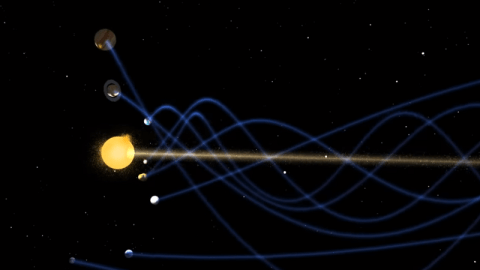
One of the most popular viral videos about space is dead wrong. But it gives us a chance to learn something incredible.
There are a lot of moving parts to the Universe, as nothing exists in isolation. There are literally trillions of large masses in our Solar System, all orbiting around the galactic center on timescales of hundreds of millions of years. But there’s a viral video, parts 1 and 2, that claims that as the Solar System moves through the galaxy, it makes a vortex shape, pulling the planets behind it as it does.
But our true cosmic address, and our real cosmic motion, is far more complex and interesting than a mere model such as this. Which is fascinating, because it’s all governed by one simple law: General Relativity. On the largest scales, it’s only gravity that determines the motion of everything, including us, as we move through the Universe.
Qualitatively, the “vortex video” has a few things right. It shows the following true facts:
- The planets orbit the Sun, roughly in the same plane.
- The Solar System moves through the galaxy with about a 60° angle between the galactic plane and the planetary orbital plane.
- The Sun appears to move up-and-down and in-and-out with respect to the rest of the galaxy as it revolves around the Milky Way.
And those things are true. But none of them are true the way they’re shown in the video. And that’s the important difference between qualitative and quantitative.
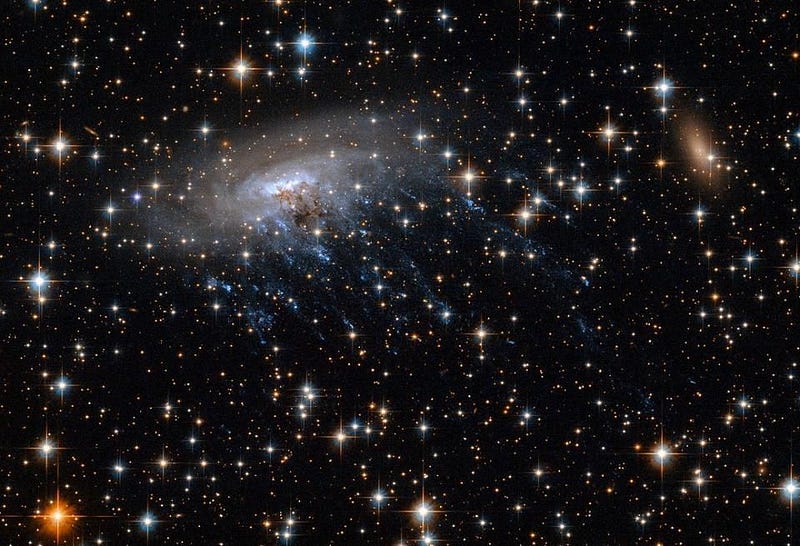
And quantitatively, we not only predict, but can measure, exactly how our motion works. It isn’t a vortex, but what it is, exactly, is fascinating.
Here we are, on planet Earth, which spins on its axis and revolves around the Sun, which orbits in an ellipse around the center of the Milky Way, which is being pulled towards Andromeda within our local group, which is being pushed around inside our cosmic supercluster, Laniakea, by galactic groups, clusters, and cosmic voids, which itself lies in the KBC void amidst the large-scale structure of the Universe. After decades of research, science has finally put together the complete picture, and can quantify exactly how fast we’re moving through space, on every scale.
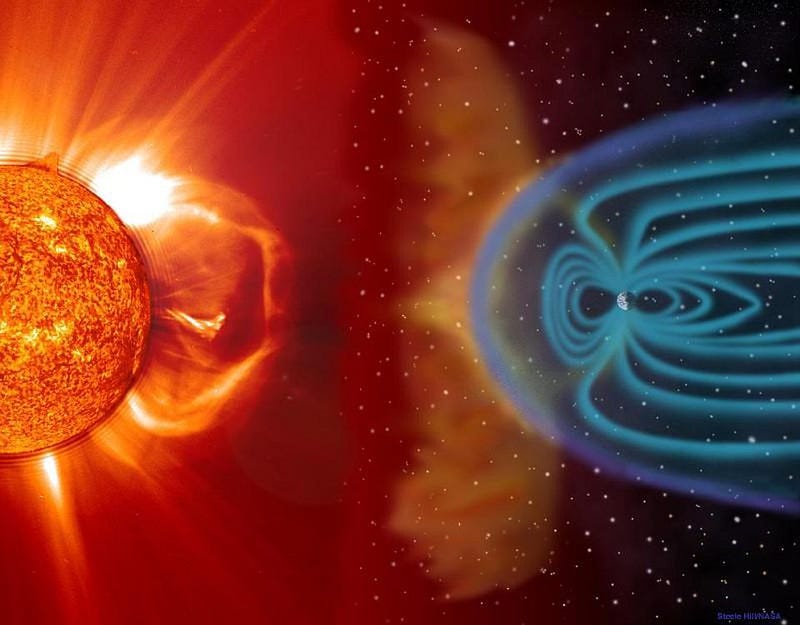
The planets both rotate on their axis and revolve around the Sun. Even though you perceive yourself as stationary, we know — at a cosmic level — that simply isn’t true. As the Earth rotates on its axis, it hurtles us through space at nearly 1700 km/hr for someone on the equator. That might sound like a big number, but relative to the other contributions to our motion through the Universe, it’s barely a blip on the cosmic radar.
That’s not really all that fast, if we switch to thinking about it in terms of kilometers per second instead. The Earth spinning on its axis gives us a speed of just 0.5 km/s, or less than 0.001% the speed of light. But there are other motions that matter more.
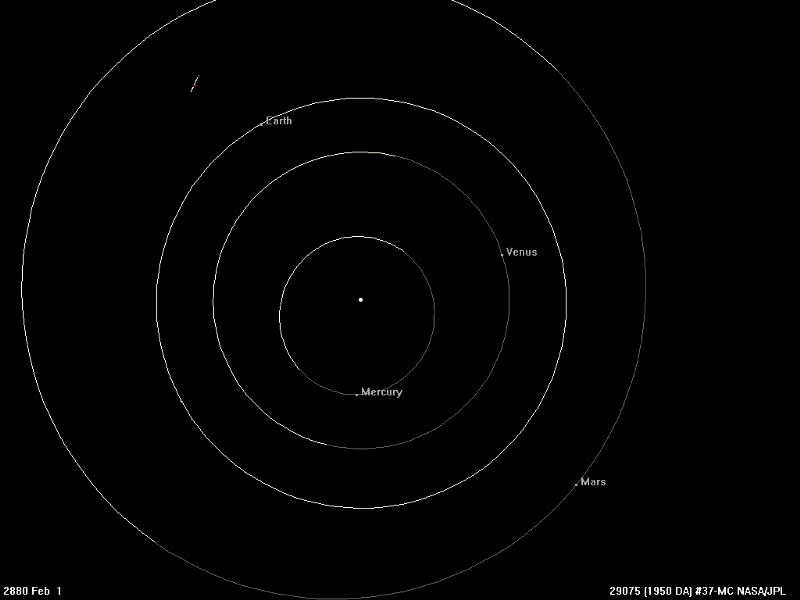
Much like all the planets in our Solar System, Earth orbits the Sun at a much speedier clip than its rotational speed. In order to keep us in our stable orbit where we are, we need to move at right around 30 km/s. The inner planets — Mercury and Venus — move faster, while the outer worlds like Mars (and beyond) move slower than this. The difference is severe: Mercury makes about 4 orbits for every 1 of Earth’s, and it takes Neptune over 160 Earth orbits before it’s completed even one revolution.
Moreover, as the planets orbit in the plane of the solar system, they change their direction-of-motion continuously, with Earth returning to its starting point after 365 days. Well, almost to its same exact starting point.
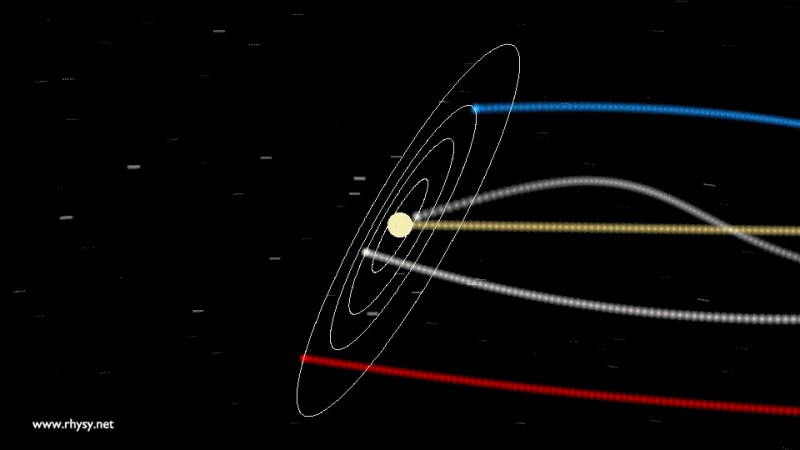
Because even the Sun itself isn’t stationary. Our Milky Way galaxy is huge, massive, and most importantly, is in motion. All the stars, planets, gas clouds, dust grains, black holes, dark matter and more move around inside of it, contributing to and affected by its net gravity. From our vantage point, some 25,000 light years from the galactic center, the Sun speeds around in an ellipse, making a complete revolution once every 220–250 million years or so.
It’s estimated that our Sun’s speed is around 200–220 km/s along this journey, which is quite a large number compared both Earth’s rotation speed and its speed-of-revolution around the Sun, which are both inclined at an angle to the Sun’s plane-of-motion around the galaxy. Throughout it, though, the planets remain in the same plane, with no “dragging” or vortex patterns emerging.
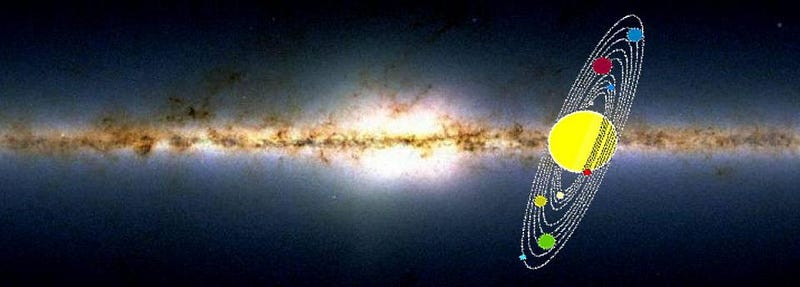
But the galaxy itself isn’t stationary, but rather moves due to the gravitational attraction of all the overdense matter clumps and, equally, due to the lack of gravitational attraction from all of the underdense regions. Within our local group, we can measure our speed towards the largest, massive galaxy in our cosmic backyard: Andromeda. It appears to be moving towards our Sun at a speed of 301 km/s, which means — when we factor in the motion of the Sun through the Milky Way — that the local group’s two most massive galaxies, Andromeda and the Milky Way, are headed towards each other at a speed of around 109 km/s.
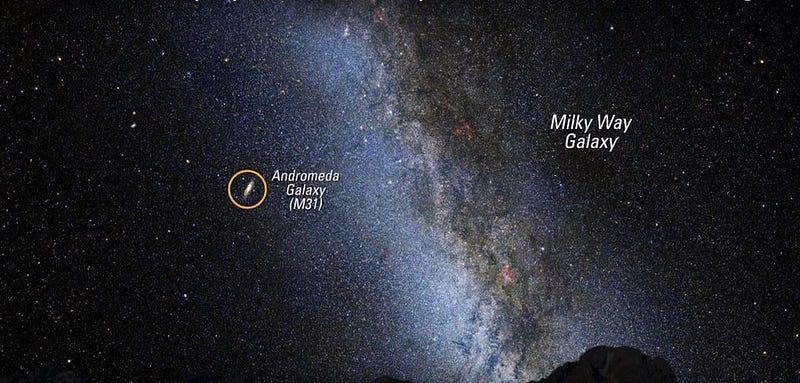
The Local Group, as massive as it is, isn’t completely isolated. The other galaxies and clusters of galaxies in our vicinity all pull on us, and even the more distant clumps of matter exert a gravitational force. Based on what we can see, measure, and calculate, these structures appear to cause an additional motion of approximately 300 km/s, but in a somewhat different direction than all the other motions, put together. And that explains part, but not all, of the large-scale motion through the Universe. There’s also one more important effect at play, one that was quantified only recently: the gravitational repulsion of cosmic voids.
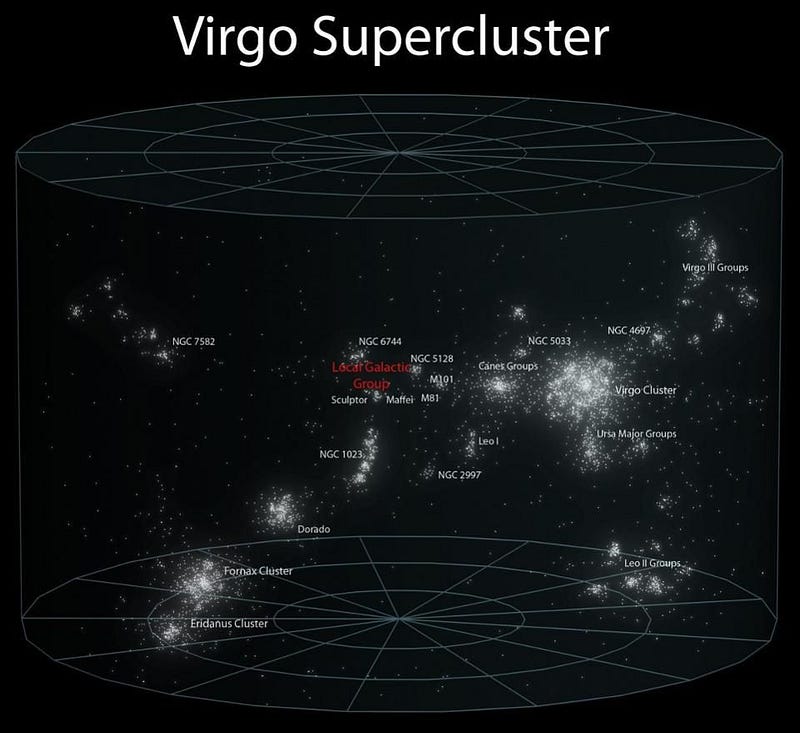
For every atom or particle of matter in the Universe that clusters together in an overdense region, there’s a region of once-average density that’s lost the equivalent amount of mass. Just as a region that’s more dense than average will preferentially attract you, a region that’s less dense than average will attract you with a below-average amount of force. If you get a large region of space with less matter than average in it, that lack-of-attraction effectively behaves as a repellent force, just as extra attraction behaves as an attractive one. In our Universe, opposite to the location of our greatest nearby overdensities, is a great underdense void. Since we’re in between these two regions, the attractive and repulsive forces add up, with each one contributing approximately 300 km/s and the total approaching 600 km/s.
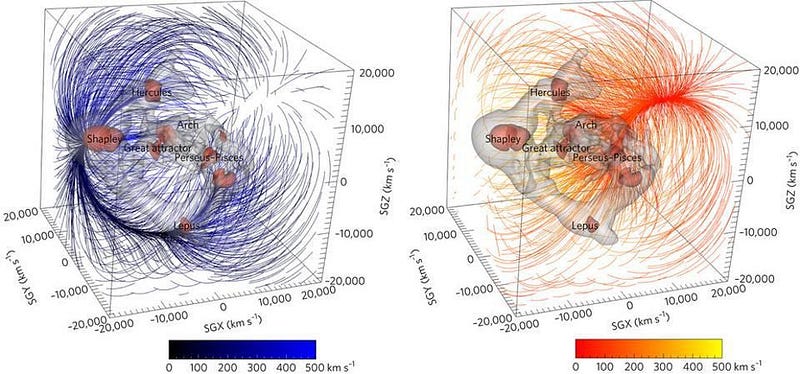
When you add all of these motions together: the Earth spinning, the Earth revolving around the Sun, the Sun moving around the galaxy, the Milky Way headed towards Andromeda, and the local group being attracted to the overdense regions and repulsed by the underdense ones, we can get a number for how fast we’re actually moving through the Universe at any given instant. We find that the total motion comes out to 368 km/s in a particular direction, plus or minus about 30 km/s, depending on what time of year it is and which direction the Earth is moving. This is confirmed by measurements of the cosmic microwave background, which appears preferentially hotter in the direction we’re moving, and preferentially colder in the direction opposite to our motion.
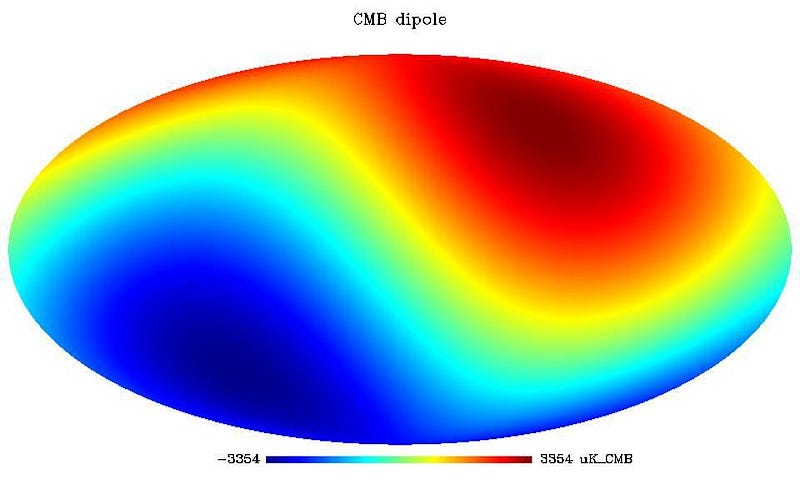
If we ignore the Earth’s rotation and revolution around the Sun, we find that our Solar System is moving relative to the CMB at 368 ± 2 km/s. When you throw in the motion of the local group, you get that all of it — the Milky Way, Andromeda, the Triangulum galaxy and all the others — are moving at 627 ± 22 km/s relative to the CMB. That larger uncertainty, by the way, is mostly due to uncertainty in the Sun’s motion around the galactic center, which is the most difficult component to measure.
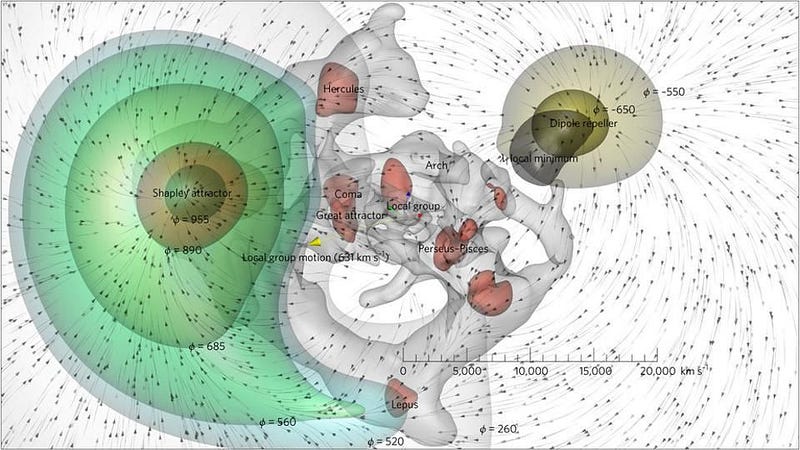
We know exactly how the Earth moves through the Universe, and it’s both beautiful and simple. Our planet and all the planets orbit the Sun in a plane, and the entire plane moves in an elliptical orbit through the galaxy. Since every star in the galaxy also moves in an ellipse, we see ourselves appear to pass in-and-out of the galactic plane periodically, on timescales of tens of millions of years, while it takes around 200–250 million years to complete one orbit around the Milky Way. The other cosmic motions all contribute, too: the Milky Way within the Local Group, the Local Group in our Supercluster, and all of it with respect to the rest-frame of the Universe.
The Solar System isn’t a vortex, but rather the sum of all our great cosmic motions. Thanks to the incredible science of astronomy and astrophysics, we at last understand, to tremendous precision, exactly what that is.
Ethan Siegel is the author of Beyond the Galaxy and Treknology. You can pre-order his third book, currently in development: the Encyclopaedia Cosmologica.





